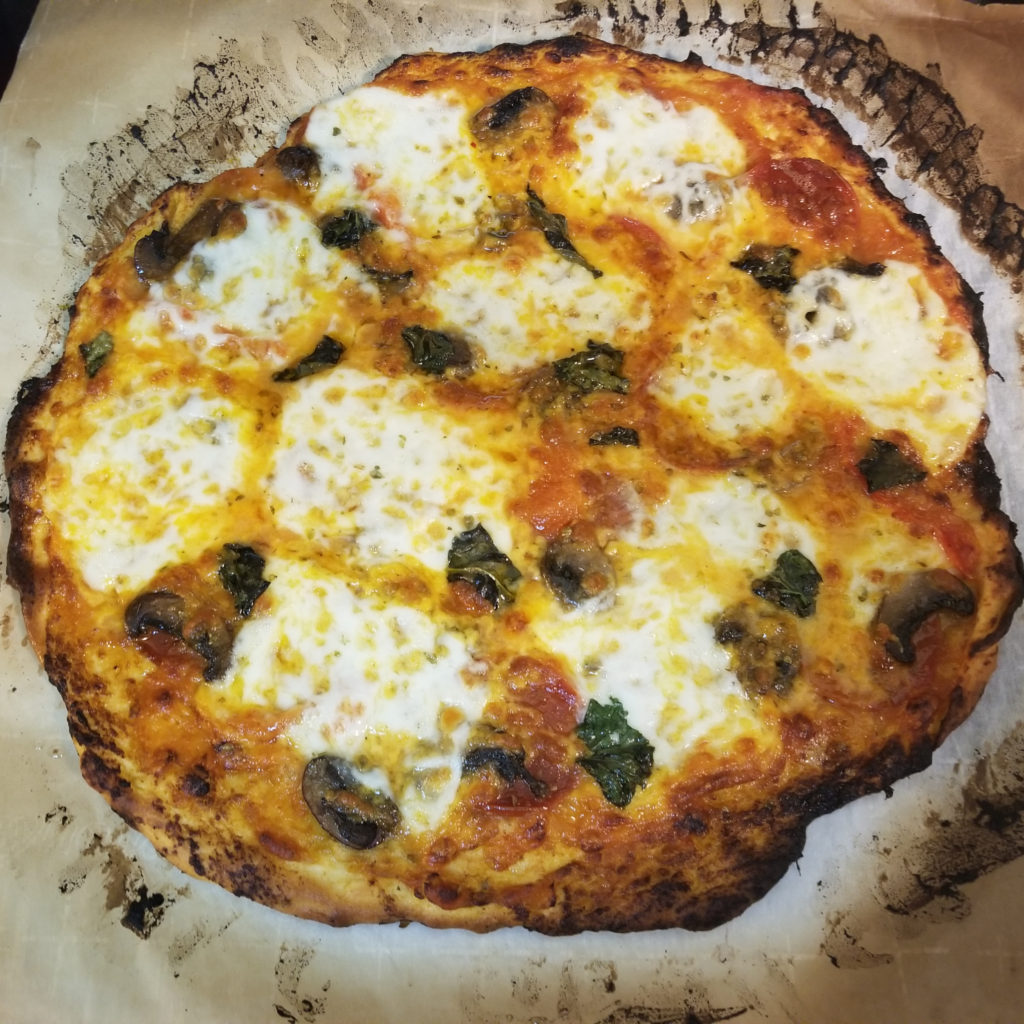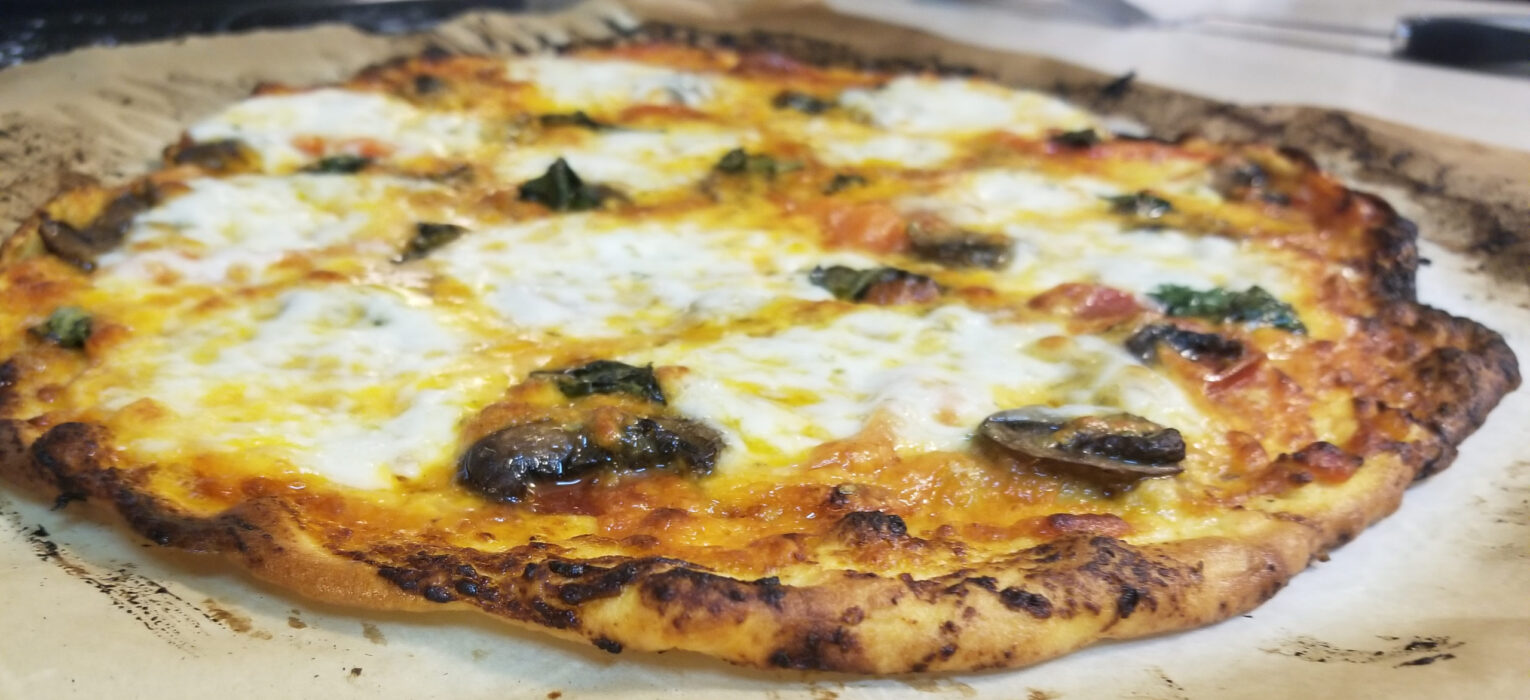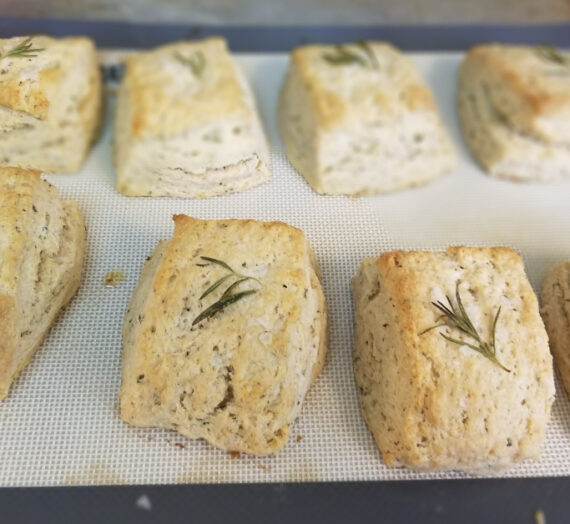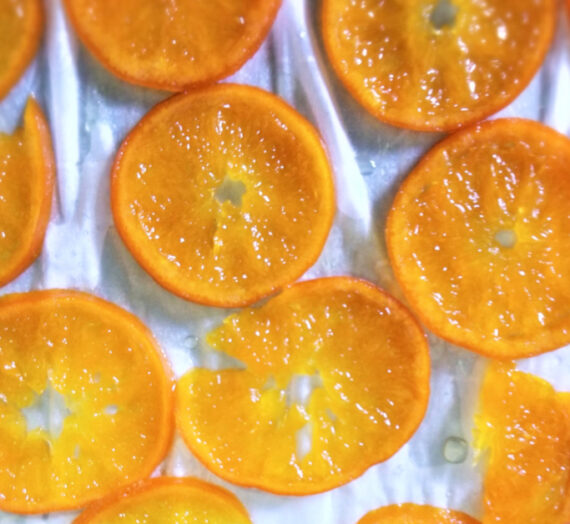Have leftover veggies? Throw them on a pizza. Have leftover BBQ chicken? Throw that on a pizza. We’ve even put kimchi on a pizza. The possibilities are truly endless.
We make pizza fairly often. This week’s version(s) featured the same dough we always make, a Mark Bittman classic, but with a twist: This time, I didn’t let the dough rise. The dough rolled out super thin, and stayed thin, which we like, since our formative pizza-eating experiences in New Haven as young adults fostered a deep-seated veneration of super-thin, burnt pizza crusts (think Sally’s). We will never exactly be able to replicate brick-oven pizza in our normal home oven, but each time we make it, we get a little bit closer to burning it achieving pizza nirvana.
Pizza Chez Thorburn (v.2020)
DOUGH*:
- 3 c bread flour
- 2 tsp yeast
- 2 tsp salt
- 1 c lukewarm water
- 2 tbsp olive oil
*If you have more time to kill, here is an endnote with a different, even more amazing, dough recipe.
SAUCE:
From a can is fine. We keep Trader Joe’s pizza sauce in the pantry for pizza emergencies.
This week, since we had extra time, we made Marcella Hazan’s tomato sauce recipe. It makes a lot, but we can use the excess later this week over pasta.
- One 28-ounce can of whole tomatoes [didn’t have, so used a can of crushed; it turned out fine]
- 5 tbsp butter
- 1 small onion, chopped into large pieces
- 1 tbsp sugar
- 1 tsp salt
- 1/4 tsp baking soda
CHEESE:
Sliced mozzarella ball + freshly grated parm over top. Eyeball how much looks like enough to sparsely cover the pizza.
TOPPINGS:
- Red peppers, mushrooms, etc. : pre-sliced and sautéed in advance
- Cooked meat if you’re a meat eater (we used turkey pepperoni)
OTHER:
- Olive oil
- Salt, pepper, oregano, garlic powder
- Fresh herbs
INSTRUCTIONS:
1. Preheat oven to 500 F with pizza stone inside it.
2. Pre-sautée the veggies, cook the meat if needed, and make the sauce.
For sauce: Simmer the onion in butter until translucent. Add canned tomatoes, sugar, and salt, turn heat to low, and simmer for 45 minutes until thickened. Purée with a stick blender. Off the heat, add 1/2 tsp baking soda to cut the acidity (a nice trick from King Arthur Flour).
3. Make the dough: Combine flour, salt, and yeast in a food processor. Pulse a few times to mix. Add water and olive oil through the feed tube and run until it comes together in a ball. Stop. Put half of the dough in a bag and refrigerate/keep for later. [OR, use less than half the dough for super thin crust pizza. King Arthur Flour recommends 9 oz dough for a 12-inch thin crust, which is just about right. Refrigerate the larger remaining portion for later.]
4. Instead of letting the dough rise, pat it into a circle and place it between two greased parchment paper sheets. Let it sit 10 minutes, then roll it out as thin as possible to a 12 inch circle. [OR, if you are using the refrigerated dough a day later – which will taste way better – let it come to room temperature (or not, it works either way) and roll it out.]
5. Place dough + paper on a pizza peel. Remove the top layer of parchment. The dough is ready to be topped.
If you don’t care whether your dough is super thin, then roll it out with a small amount of flour on a clean counter top or pastry board. No parchment paper needed, except for the peel so the pizza doesn’t stick to it.
6. Brush crust with olive oil and sprinkle with garlic powder.
7. Brush sauce onto dough, sparingly. About 1/4 cup or less is good.
8. Add toppings and mozz slices. Sprinkle with parmesan, salt, pepper, oregano, and/or any fresh herbs you want to use.
9. Use pizza peel to transfer pizza to the stone in the oven. Bake 8-10 minutes at 500 F, or until browned and bubbly. If your oven and pizza stone can withstand higher temperatures, 550 F is even better.
10. Take it out, slice it, and eat it! We like to sprinkle garlic salt and crushed red pepper on ours at the table. Topping with fresh torn herbs is also great, either before or after the pizza has baked.
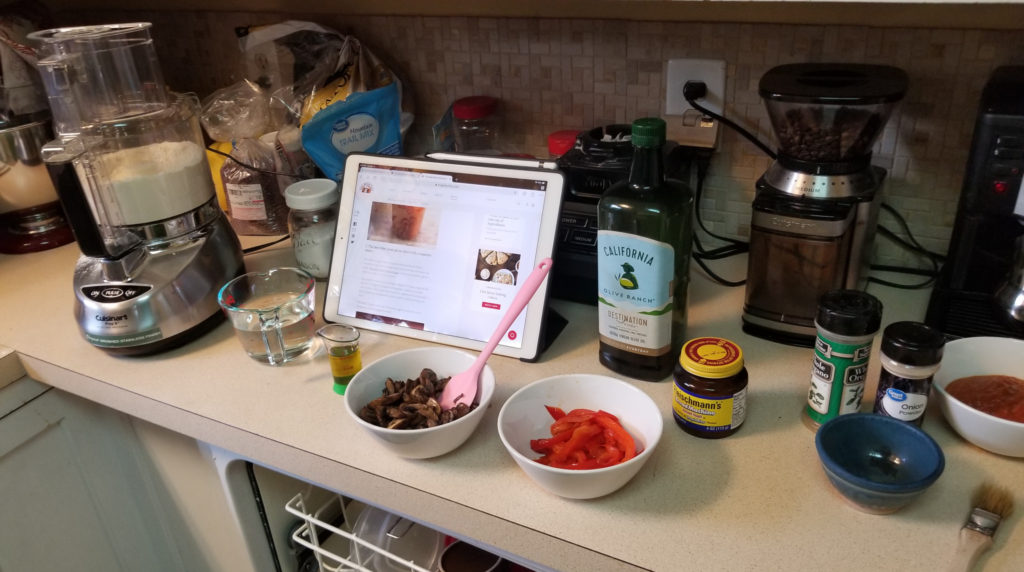
The pizza making station, all ready to go (and consulting KA Flour’s website for new tips and tricks!). 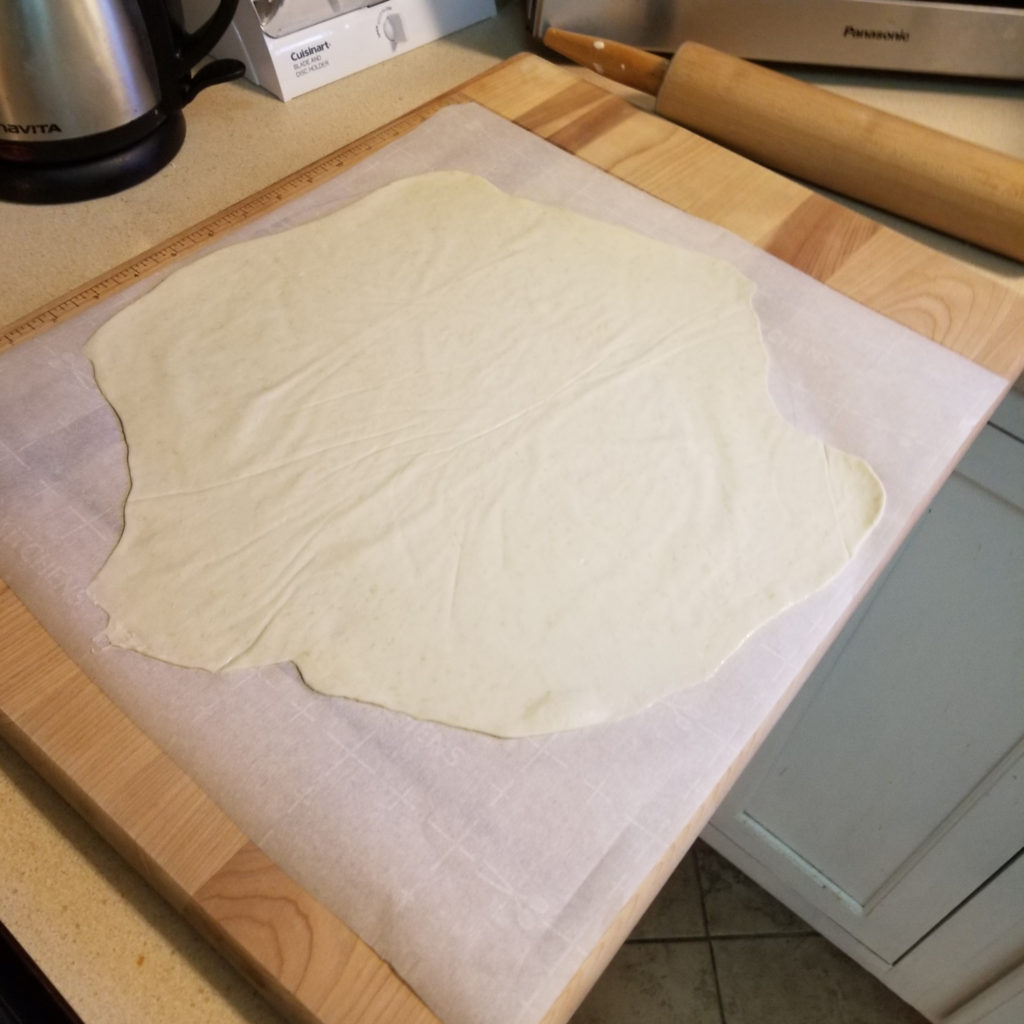
Dough rolls out very thin when placed between two greased parchment paper sheets. 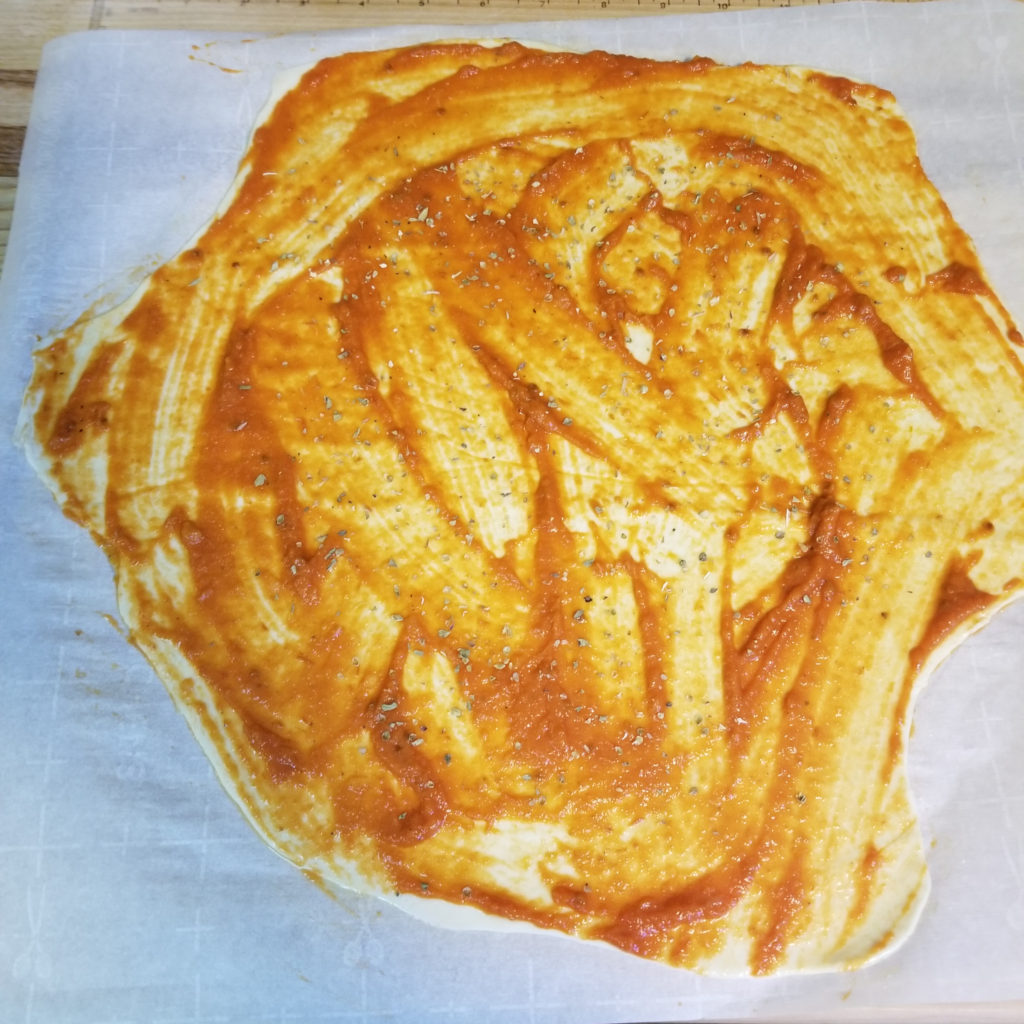
A thin brushing of tomato sauce is plenty. 
Pre-baking action shot with pizza peel. 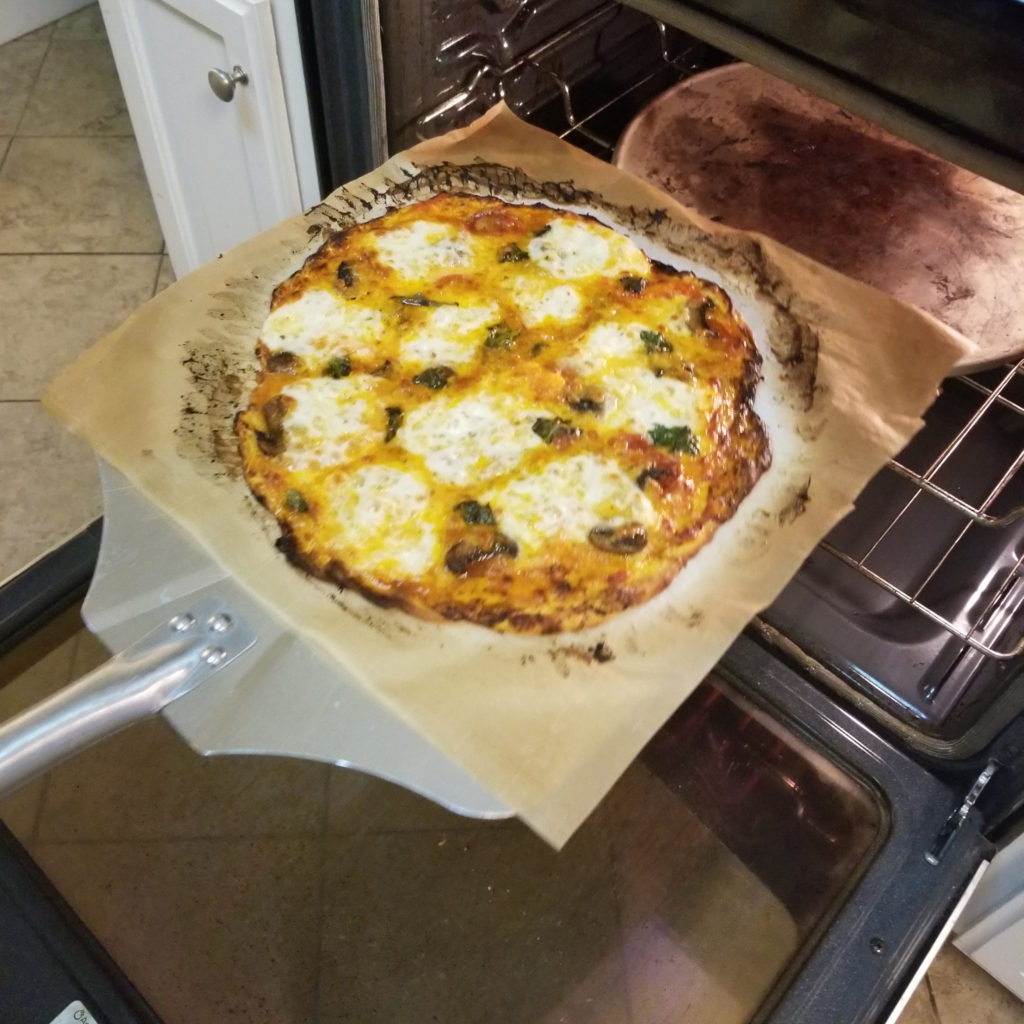
A delicious pizza, emerging victorious from the oven. 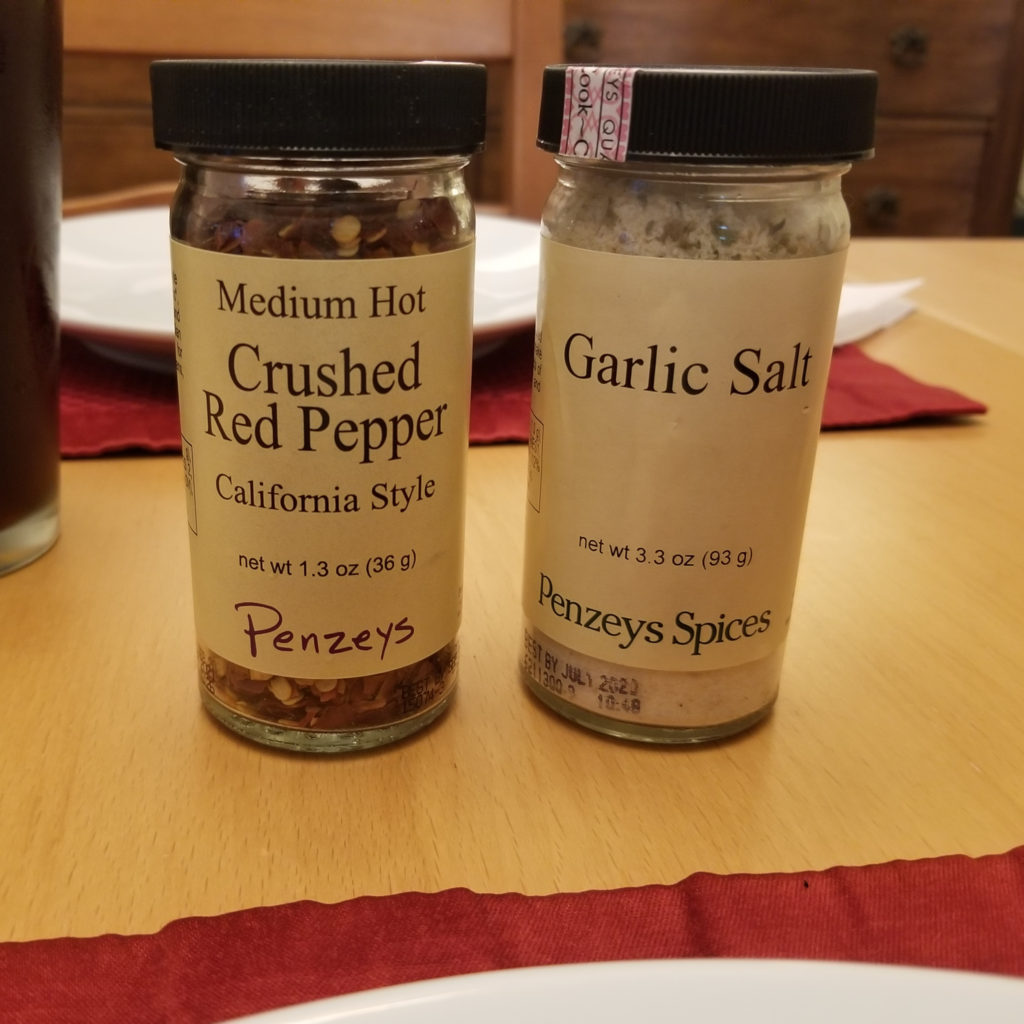
The cherry on top: Penzey’s spices!
The Mark Bittman recipe I included above has served us well for 95% of at-home pizza situations. That is, if we decide somewhat spur of the moment to make a pizza, it is possible within an hour to have functional dough–and in even less time if we skip the first rise. It never needs extra flouring, comes together in a wonderfully compact and not-too-sticky ball, generally rolls out easily, and the leftover dough ball matures well in the fridge for more pizza (or breadsticks) the next day.
Our only criticism–and it is tiny–is that Bittman’s recipe never produces truly crunchy, salty, thin crust pizza. It is always a little doughy and chewy, even when you skip the first rise. If this is the way you like your pizza, then stop: You’ve just found the perfect dough recipe. But, if like us, your memories of the best pizza ever come from Wooster Street in New Haven, slightly chewy and doughy will not cut it.

Enter this book, which we found at a discount bookstore in Maine several years ago, then forgot we owned. Turns out, it contains a recipe ostensibly from Abate’s, right next door to the famed Pepe’s and Sally’s.
Out of curiosity, I followed Abate’s crust recipe this week when I made pizza #2, and it was magical. First though, it was magically awful: Not enough dough for kneading with a stand mixer’s dough hook to be effective, way too sticky, not enough flour, and it stuck EVERYWHERE when I tried to roll it out. I almost trashed it. But, then I grabbed my new pastry/bench scraper, re-gathered the errant dough into a ball that I added *much* more flour to, and then the real magic started. After sitting about 10 minutes, it rolled out beautifully. And when it baked, it stayed thin, got super crunchy and crispy and burnt on the edges, and tasted as much like New Haven apizza as possible considering my oven heats only to 500 F, max.
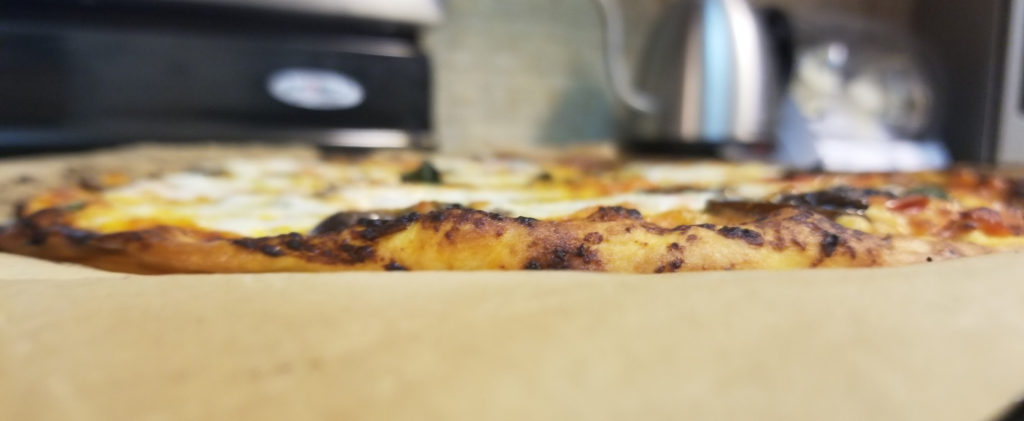
So, here are my recommendations for New-Haven-style pizza crust:
- Combine 2/3 cup (realistically more) flour, 1/3 cup water, 1/2 tsp instant yeast, and 1/2 tsp salt until a very sticky dough forms.
- Knead *by hand* for 5 minutes, adding flour as needed so it doesn’t stick to everything.
- Refrigerate 4+ hours. Then sit out at room temperature (covered) for 1 hour.
- Carefully roll out, flouring as needed so it doesn’t stick. When it is about 6-8 inches in diameter, stop, cover, and let it rest 10 minutes. Then finish rolling it out.
- Brush with olive oil. Sprinkle the dough with sea salt, garlic powder, and onion powder. Then lightly brush on sauce. Add toppings, mix in some cheddar cheese with the mozz ball slices. Top with parm, fresh herbs, whatever makes you happy.
- Bake at 500 F for c. 8 minutes, until bubbly and starting to brown. The mozz will not quite be brown yet. To take it all the way, turn the oven to broil, and take the pizza out when the mozz starts to bubble and char a little bit. The edges will definitely be crisp, and some will be burnt, but it is utterly fantastic that way.
Bon (a)pizza appétit!
